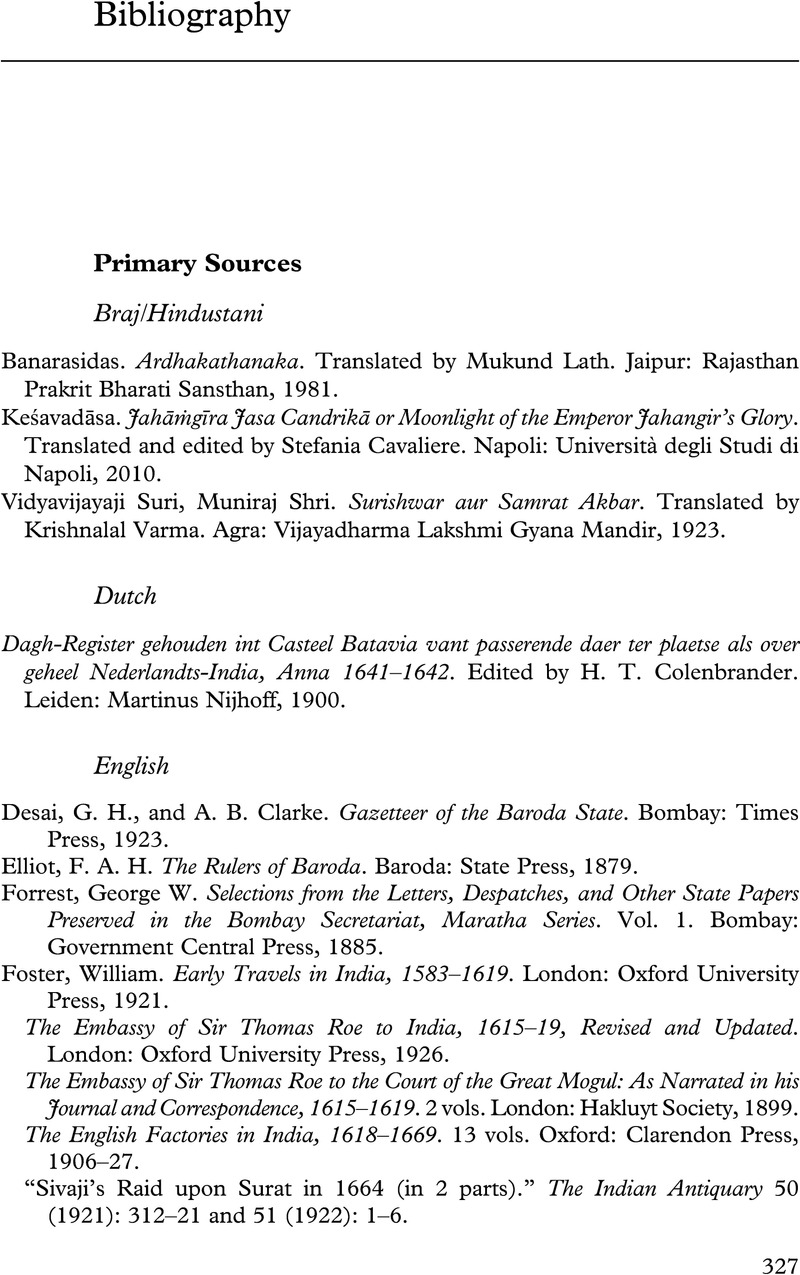Book contents
- Bankrolling Empire
- Bankrolling Empire
- Copyright page
- Dedication
- Contents
- Figures
- Maps
- Tables
- A Note on Translations, Transliterations, and Dates
- Acknowledgments
- Mughal Family Tree
- Jhaveri Family Tree
- Gaekwad Family Tree
- Haribhakti Family Tree
- Introduction
- 1 Prelude: The Mughal Empire, 1526–1750
- 2 Courtly Mutualism: The Emperor’s Jeweler Shantidas Jhaveri, 1628–58
- 3 Political Commensalism: Manekchand Jhaveri and Bankrolling Bids to the Throne, 1658–1707
- 4 Interlude: Cultivating Financial Crisis under Aurangzeb, 1660s–1719
- 5 Expedient Extortion: The Governor’s Golden Goose Khushalchand Jhaveri, 1719–30
- 6 Competitive Coparcenary: Vakhatchand Jhaveri and Brokering Politics, 1730–1818
- 7 Postlude: Bankrollers of Mughal Succession, 1750–1818
- Conclusion
- Book part
- Glossary
- Bibliography
- Index
- References
Bibliography
Published online by Cambridge University Press: 16 November 2023
- Bankrolling Empire
- Bankrolling Empire
- Copyright page
- Dedication
- Contents
- Figures
- Maps
- Tables
- A Note on Translations, Transliterations, and Dates
- Acknowledgments
- Mughal Family Tree
- Jhaveri Family Tree
- Gaekwad Family Tree
- Haribhakti Family Tree
- Introduction
- 1 Prelude: The Mughal Empire, 1526–1750
- 2 Courtly Mutualism: The Emperor’s Jeweler Shantidas Jhaveri, 1628–58
- 3 Political Commensalism: Manekchand Jhaveri and Bankrolling Bids to the Throne, 1658–1707
- 4 Interlude: Cultivating Financial Crisis under Aurangzeb, 1660s–1719
- 5 Expedient Extortion: The Governor’s Golden Goose Khushalchand Jhaveri, 1719–30
- 6 Competitive Coparcenary: Vakhatchand Jhaveri and Brokering Politics, 1730–1818
- 7 Postlude: Bankrollers of Mughal Succession, 1750–1818
- Conclusion
- Book part
- Glossary
- Bibliography
- Index
- References
Summary

- Type
- Chapter
- Information
- Bankrolling EmpireFamily Fortunes and Political Transformation in Mughal India, pp. 327 - 342Publisher: Cambridge University PressPrint publication year: 2023



